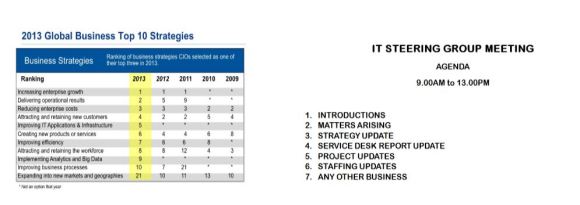( This post is in memory of the IT department out there.)
Consumerization. A word that wouldn’t have been heard of in technology circles not that long ago but now is used in everyday business ( IT strategy ) discussion, IT planning meeting, technology presentation and webcast, blog and tweet about the 21st century IT landscape. Like magic or otherwise ‘we’ ( the IT industry ) have blended the world of social and corporate technology. A mash up of words, devices, software, products, services and terminology. A veritable smorgasbord of stuff and the great thing is that no one really knows what is happening ( or going to happen ). Those that do are keeping it close to their chests!
Consumerisation. It is now just plain and simple High Street language. You walk into any electronics store, retail outlet or on line site and it hits you square on. Consumerisation. We are all living the reality of this without really caring about the word itself yet knowing we are ‘consuming technology’ on a rate we cannot understand. We don’t care because consumerisation of other lifestyles and working practices have already been there and done that. TV. Music. Travel. Finance and so on.
Thanks to many smart people ( with clever ideas – Tim B Lee ), and scientific advancement ( Moores Law ) we now ‘consume’ our collaborative relationships with frenzy. We ‘consume’ content across the internet with unrelenting thirst. We ‘consume’ knowlede 24 7. We ‘consume’ devices as soon as the next new device hits the streets. We ‘consume’ the competitive nature of how consumerisation is changing the lives of our children and imagine the impact on the lives of their children and what we will be able to do when we are grandparents.
Enter ( or exit? ) the traditional IT department. The traditional IT department often became called the MIS department or Information Services Department. Business Systems would be thrown in to the mix also. Along with the department titles came the job titles. IT Manager,IS Manager, CIO,CTO,Business Systems Director, Information Systems Manager. And so on.
To the purist we of course get all this and for most these titles are totally valid. After all we still have Human Resources departments, Finance and Marketing. These guys are also affected by the changing picture of how corporates need to adapt to compete in the ever changing business world. Outsourcing, outtasking and insourcing are the words that drive how these ‘support services’ are commissioned and consumed. These areas are also part of the consumerisation bubble. HR services are often outsourced. Finance also. Marketing is often a bought in capability. Many organisations have downsized the staff numbers on the payroll as they seek to improve service and lower costs.
I argue however it is the IT DEPARTMENT that has ( or will be ) changed the most.
10 years ago the IT department was centralized, compartmentalised and layered with middle management and administrative domains i.e. security, service desk, ops, development and network services. And of course a decade ago, there was a lot of new stuff that needed to be set up — Ethernet networks, directory servers, mail servers, backup systems, notebook explosion, remote access because there was a lot of baby boomers who still needed helped transitioning into a computerized workplace. Those days are long gone. The virtualization paradigm shift has now ‘crossed the chasm’ and is expected now in any modern IT operation.
Technology needed to run a modern business sort of runs itself today and don’t require a lot of time from IT pros to deploy them and keep them running. Technology (software and hardware ) now works more than often not. The classic IT department therefore spends a lot less time doing repairs, maintenance, and end user support. Replacement is the new support. The decade we are in will see employees just swaping out their malfunctioning laptop, smartphone, or tablet to IT and immediately get a replacement device that will connect to the private cloud and/or public cloud and instantly download the user’s apps, settings, and data. They may eventually bring their own ( BYOD).
The cloud (private and public) will also transform provisioning servers and setting up data centers from a month-long task to a matter of minutes with a few clicks in the web browser. The real work won’t be setting up the servers any more, it will be all about choosing the right applications to deploy and putting the right plans in place to help the organization streamline business processes.
So what will happen to the IT Department?
Well this is the key thing. Across all the sectors, industries and business size of course there is no one size fits all. Some organisations will still need big teams. Why? A lot of ‘closed book’ back office systems will still need ‘food and water’ because they run ‘systems of record’ applications which are deemed legacy but crucial to the trading capability of the organization. Moving to the cloud and accessing via smartphones is not possible. Outsourcing may not be an option because of the lack of skills available in the market place.
Reinventing the IT Department is an interesting topic. The background and evidence for change is compelling. Of course bringing in new ‘blood’ often shakes up the ethos and direction. However, the real focus for an IT Department is this.
If all this talk of Consumerization is true and your organization is demonstrating the traits of a business using technology in ways they had never dreamt of ( or planned for ) how does the traditional way of managing IT deal with this shift. I have talked about the emergence of the ‘Shadow IT ( or office ) and people use ways of working around the ‘IT Catalog’ and use their imagination ( ideas ) to collaborate with colleagues and customers that totally are ‘hidden’ from the IT Department. You can almost here them walk past the door of IT as they find alternative ( better ? ) ways of doing their own IT. A bit like a Fleet Department that loses customers who now can take car allowances or use public transport.
So if the IT Department is to survive I think there are 4 things it needs to do.
- Recruit Technology Coaches. Perhaps a refocused Business Analyst? Make them the Front Office to your Back Office. Make them your sales people. They need to own the ‘sell of the IT services’. They have competition now ( cloud and outsourcing ) so they need to be commercial, business orientated and have true track record. Align them to the ‘ideas departments’ as the Technology Coach ( like the title? ) Make this role someone who bridges the gap and ensures that any attempt by such ‘innovative’ departments are captured and controlled to ensure the IT Department retains a level of governship. They need to be relevant and part of the critical path.
- Build a talent stream. Marginalised IT departments too often fail to attract young talent and fail to sale themselves thus closing the door and staying with an ageing workforce. This is a big deal. Whilst everyone is entitled to employment protection of course, there does need to be a source of talent to keep the balance correct. Consider a graduate pipeline. This generation is vital to help spin ideas and translate into the business. No one wants to discuss technology with a middle aged ‘deep dive’ techie ( with all due respect to my generation J )
- Change the department name. Is IT still relevant? Surely Business Systems or Business Services is better. Isn’t Information Technology now just consumerized to death? Technology is now part of the doing business discussion. Just like people, buildings, partners. It is a service. It should be called so? ( big debate )

4.Identify a first follower. Remember the ‘first follower’ video? http://www.youtube.com/watch?v=fW8amMCVAJQ. Well make sure the CIO/CTO has a first follower. Someone who sits up and ‘dances with the CIO/CEO/business’ as they come up with ‘ideas’ and works to translate the message and build the proposition. The first follower in an IT organization is a very rare breed but if you have one then it can mean such a big difference. Why? Because the first follower is the one everyone else follows and if you want an idea to gain legs and turn into something practical and delivered then you would not go far wrong identifying your first follower and focusing on making him/her part of the ‘technology ideas generation’ discussion. Remember the first follower doesnt necessarily need to be one of your own people. A trusted advisor. A partner. Someone who brings experience, industry knowledge, commercial and technical wisdom.
And to close there is a view that as cloud ( not just the public stuff but a phase of transformation of service, devices and applications ) matures the need for ‘technology personnel’ will be dispersed into business functions as coaches to inform and educate business managers on the decisions they need to take as they seek to use consumerised technology for corporates to their commercial advantage.
Cheerio.
( I can’t understand why people are frightened of new ideas. I’m frightened of the old ones. John Cage )
Brummie




